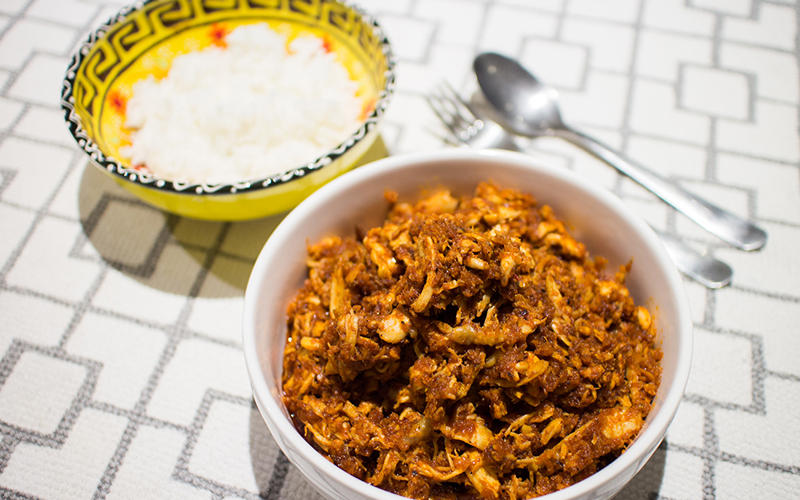
Is this spicy-sweet shredded chicken sambal dish a main or a condiment? Well, it’s a little bit of both.
Not to be mistaken with the seemingly more popular fried-chicken-cooked-in-sambal, chicken sambal requires more hands-on effort but the results are well worth the extra time spent in the kitchen.
As a main dish, chicken sambal goes perfectly with plain white rice, ketupat or even as a double-duty component in nasi lemak – it’s chicken and sambal all in one after all! Or have it for breakfast with some fluffy white bread. As a condiment, let it complement your other favourite local dishes. Chicken sambal also goes well with slices of fresh cucumber and other crunchy ulams.
Enjoy!
Ingredients
- 1 whole fresh chicken (about 1.4 to 1.5kg), cleaned
- water
- 1 cup ice cubes
- 200ml cooking oil
- 85g rehydrated & blended chilies (cili boh)
- 100g tamarind
- 50g coconut sugar (gula Melaka)
- 150ml chicken stock, from boiling the chicken
- 2 ½ tsp salt
- ½ tsp black pepper, roughly ground
Aromatics
- 500g large onions
- 40g garlic
- 85g galangal
- 85g ginger
- 20g lemongrass, bottom only (about 2 pieces)
Serves: 6-8
Method: preparation
- In a stockpot, add cleaned chicken and fill the pot with water until chicken is almost submerged. Remove chicken, setting it aside, and bring the water to a boil over high heat.
- Add chicken, breast side up. Turn the heat down to simmer and let it cook for 40 minutes, uncovered. We recommend using a kitchen timer.
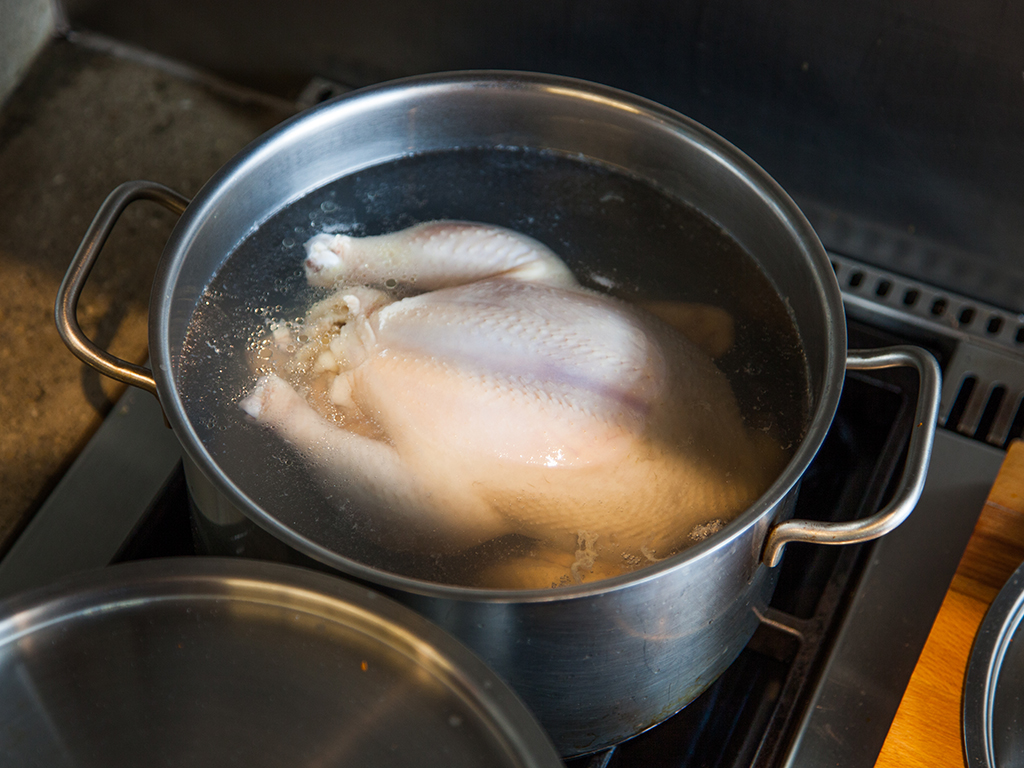
- While the chicken boils, blend all aromatic ingredients until fine. Add a little bit of water if needed to aid the blending process. Be patient, this may take up to 20 minutes (or more) depending on your blender.

- Prepare an ice bath when there is 5 minutes left to the timer. Fill a metal bowl or pot with cold water until about half full. Add ice.
- When the timer is up, carefully lift chicken out of the stockpot. Remove liquids from the chicken cavity by pouring it back into the stockpot, but do this very carefully as the liquid is very, very hot! Transfer chicken to the ice bath. Set your timer for another 15 minutes.

- Don’t throw the chicken liquids away. Turn the heat back on to high and let it boil until it’s time use it again.
Shredding time!
- After the 15 minutes are up, it’s time to get your hands dirty. Remove chicken from the ice bath and transfer it to a plate or chopping board. Prepare another empty large plate or bowl for you to ‘work’ with.
- Using your hands, tear parts of the chicken off and remove the flesh onto a plate, shredding them roughly. You’ll want to shred every single part of the chicken – skin, fatty bits and all. Put the discarded bones into the stockpot.
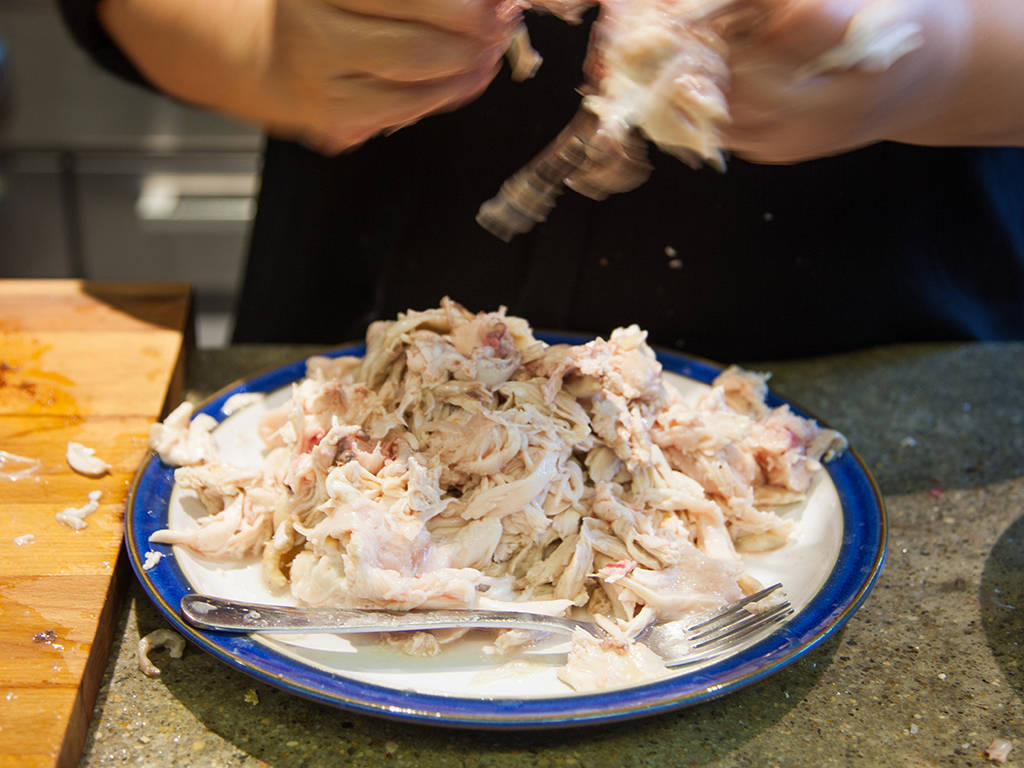
- Once the rough shred is complete, use your hands or two forks to shred the chicken to finer strands, about 2 to 3mm wide. Don’t worry if there are some thicker strands or small chunks of chicken.
Time to cook some chicken sambal
- Heat your wok on high and add in cooking oil.
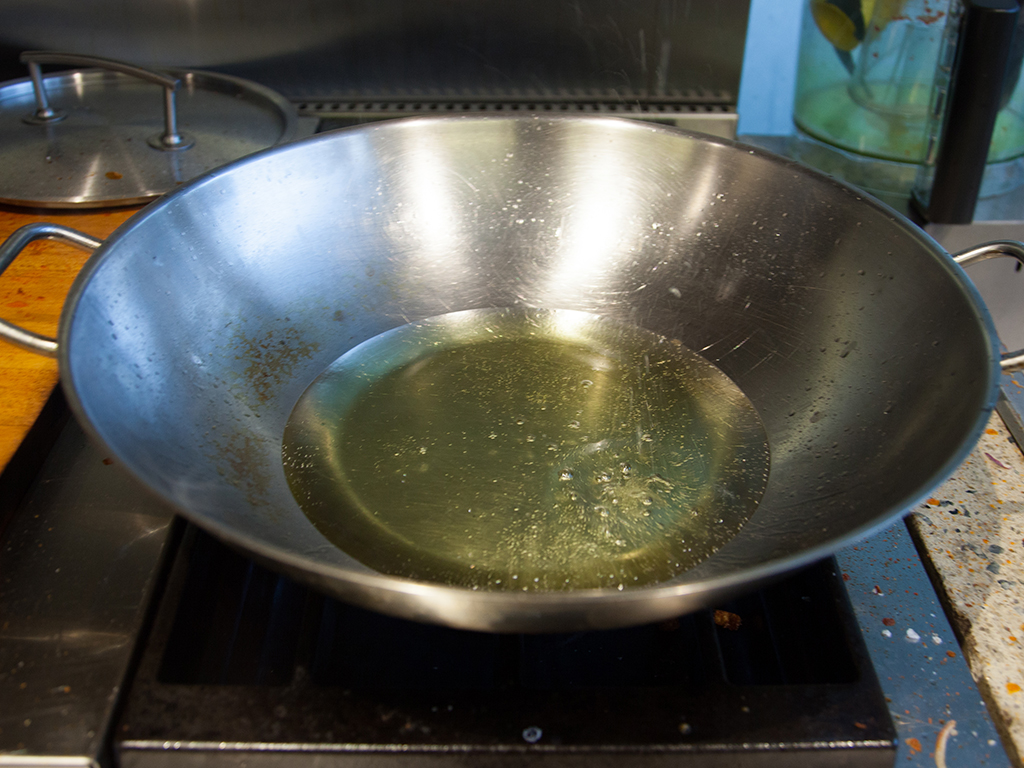
- When cooking oil is ready for frying, add in blended aromatics. Give it a quick stir, then add cili boh and stir to mix thoroughly.
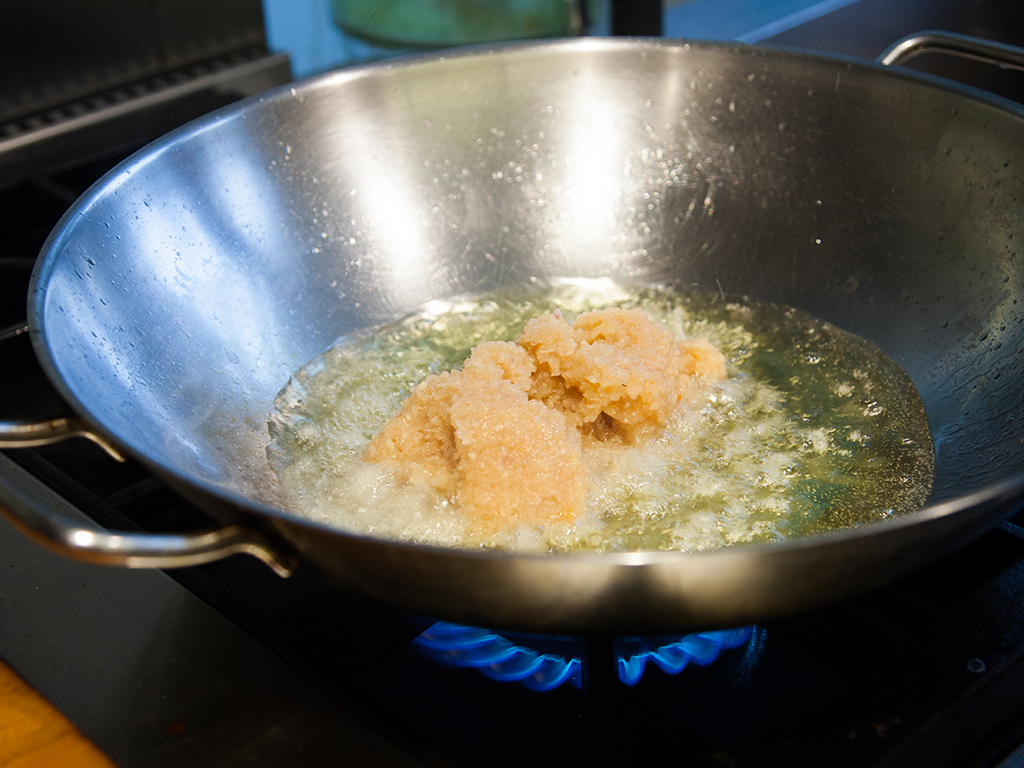
- Add 1 tsp salt and ½ tsp ground black pepper. This helps the flavours come together as the aromatics cook. Continue stirring the aromatics while it cooks, scraping the bottom of the wok to ensure the ingredients don’t burn.
- Roughly 15 minutes later, add 1 cup water to tamarind and squeeze the pulp with your fingers to mix thoroughly. Use a sift to pour the tamarind liquid into the wok, squeezing out the juice from the pulp to get as much of the liquid as possible. Stir.
- Add coconut sugar and stir to mix.
- 5 minutes later, add 150ml of reduced chicken stock from the stockpot and another 1 tsp salt. Stir to combine.
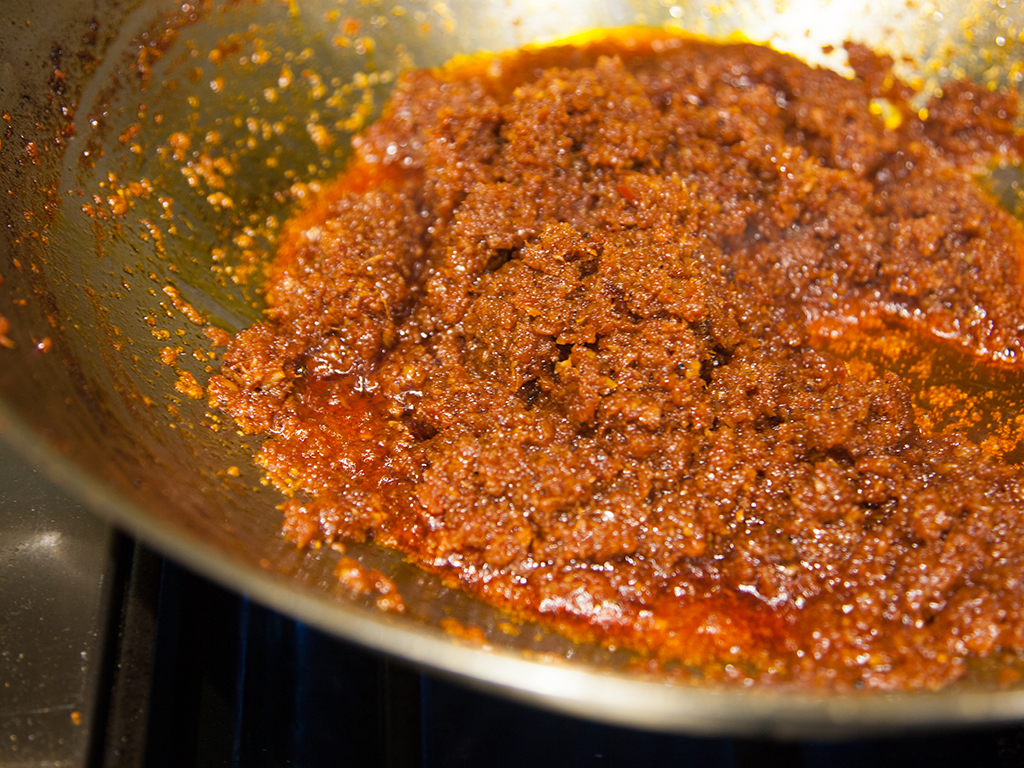
- Continue stirring until the sambal darkens into a deep red tone, about 20 minutes.

- Add shredded chicken and stir thoroughly, followed by ½ tsp salt. Continue to cook for another 5 minutes.
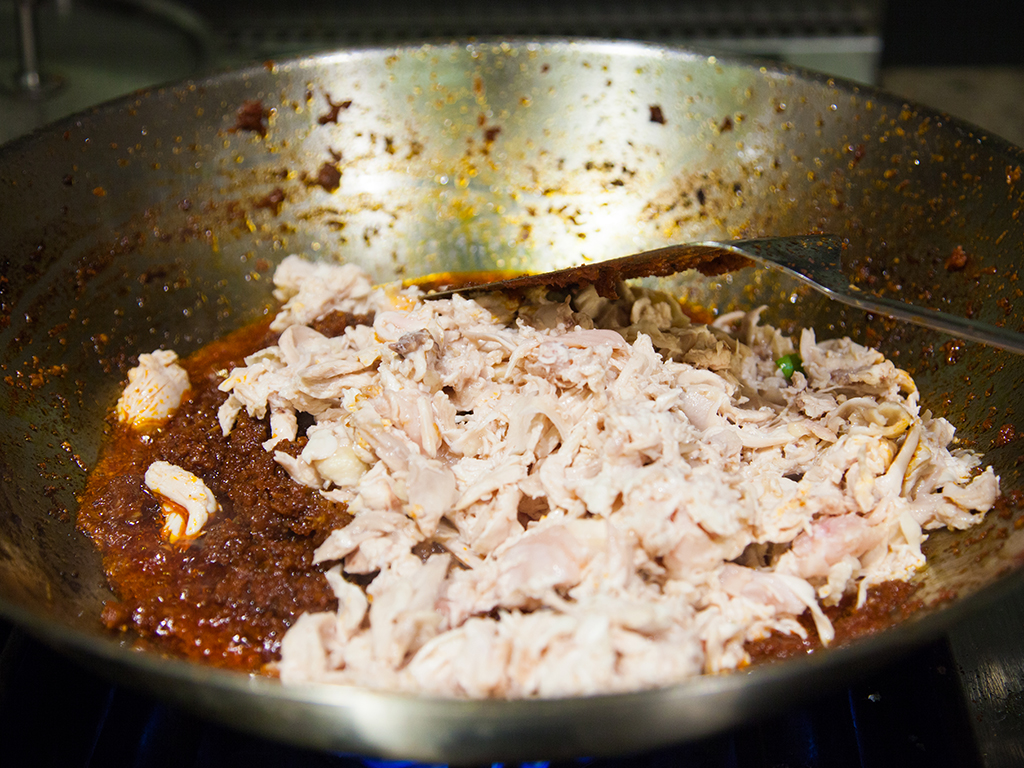
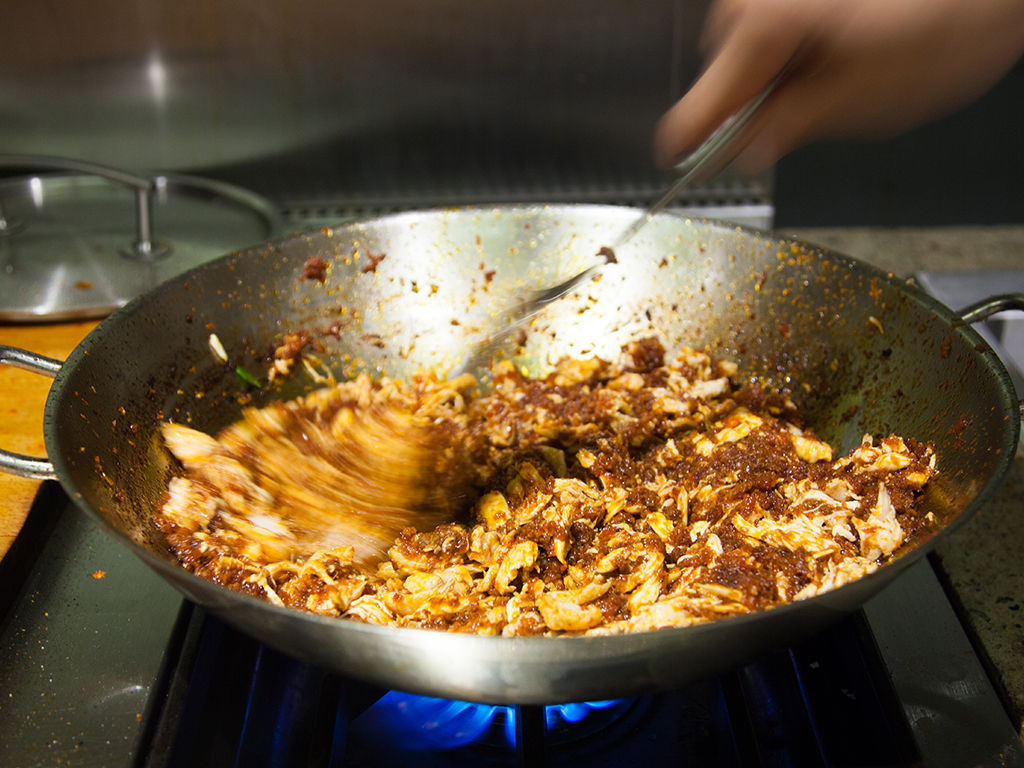
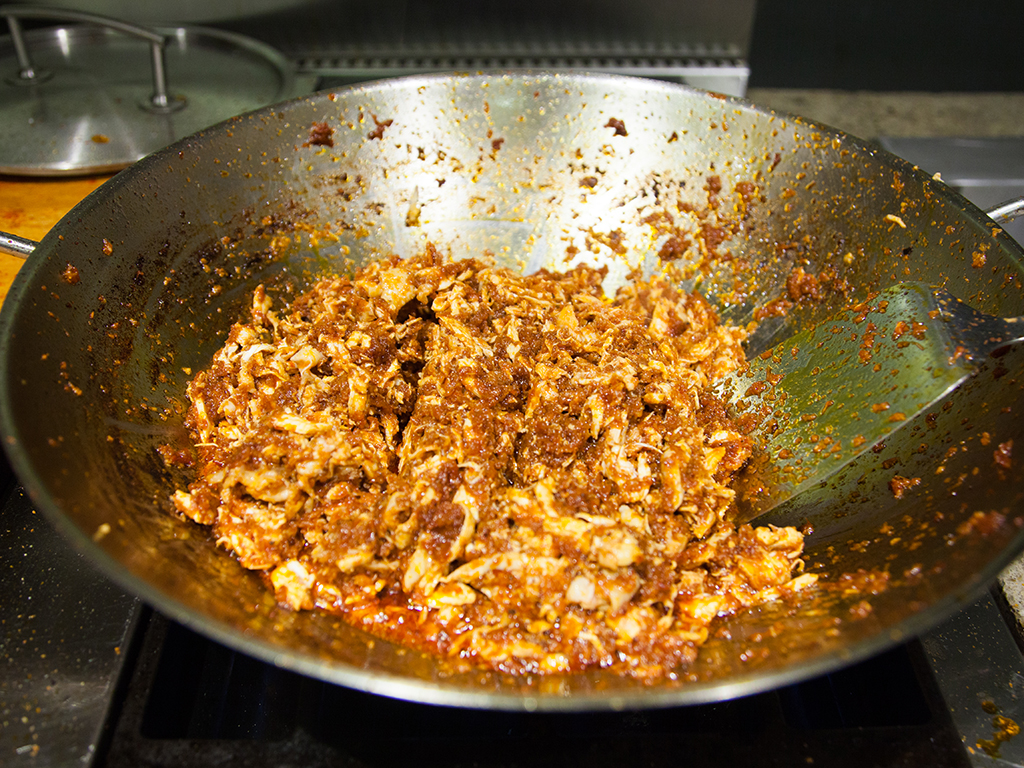
- Transfer chicken sambal to a serving dish and you’re all set!
Extra tips
- You can also combine large onions and shallots, just make sure the combined weight is the same as stated above.
- No coconut sugar? Regular white sugar is ok too, but reduce the amount to 40g instead. We recommend using coconut sugar though as it gives the entire dish a deeper, caramelized flavour.
- Don’t turn the chicken over while it cooks in the stockpot. Different parts of the chicken cook at different levels, and breast meat cooks the fastest. This is why chicken breast is always faced up to keep it furthest away from the flame.
- Don’t worry if your chicken isn’t fully cooked when it enters the ice bath as it will be cooked again later.
- Grate your coconut sugar or break them into smaller chunks so it melts faster and more evenly.
- If you don’t have sufficient chicken liquids, you can also use readymade chicken stock.
Despite its spiciness, there is something comforting about chicken sambal. If you have some time to spare, give this recipe a try. Don’t forget to hashtag us with #butterkicap when you do!
Related articles:
Ghee Rice: Nasi Minyak Made Easy
